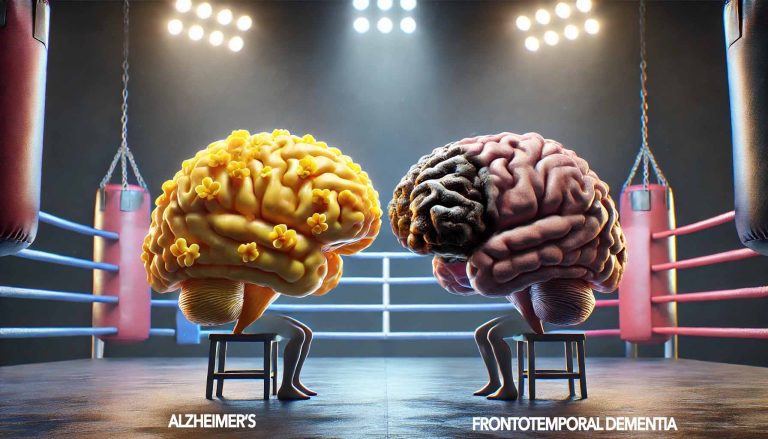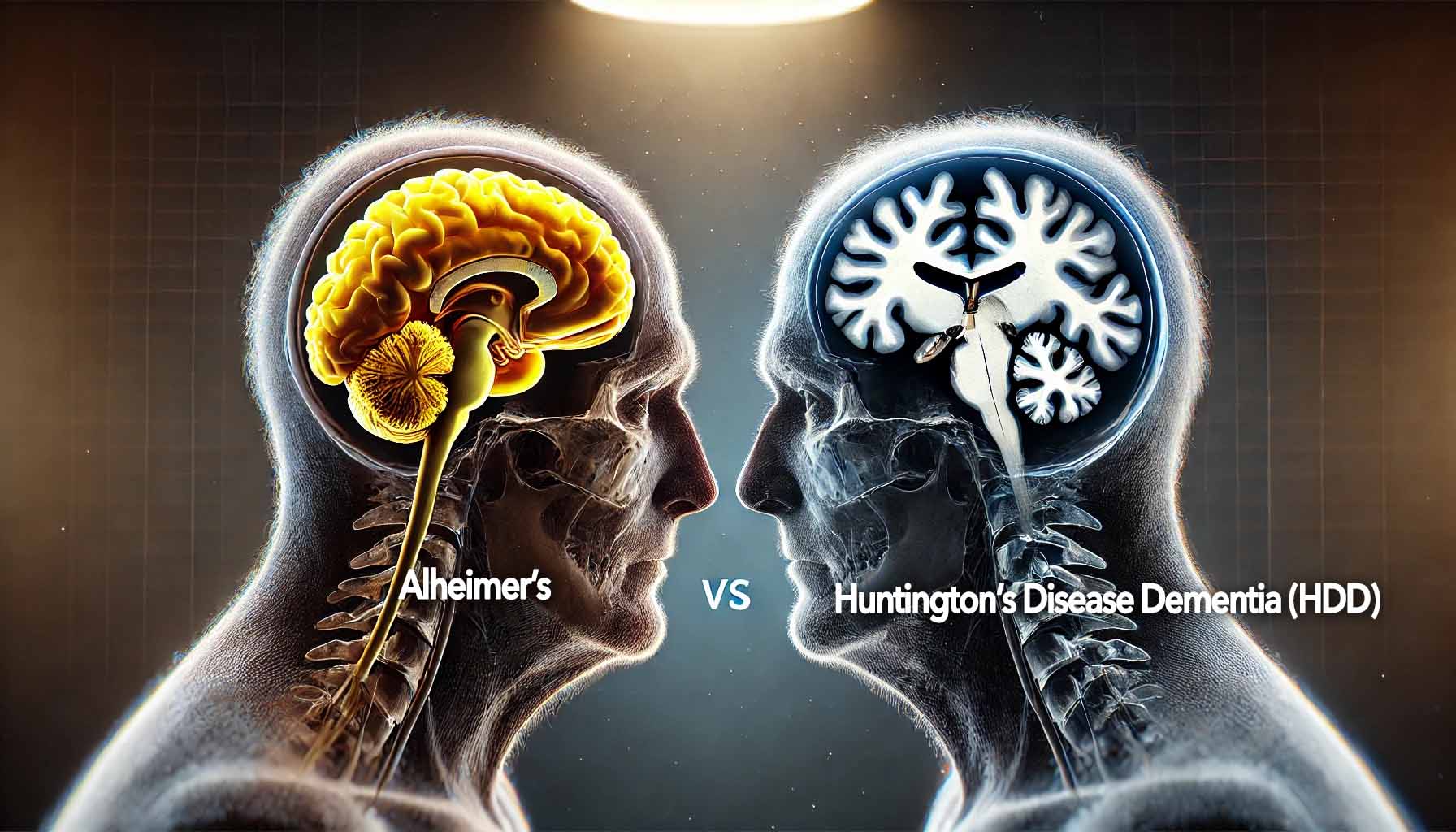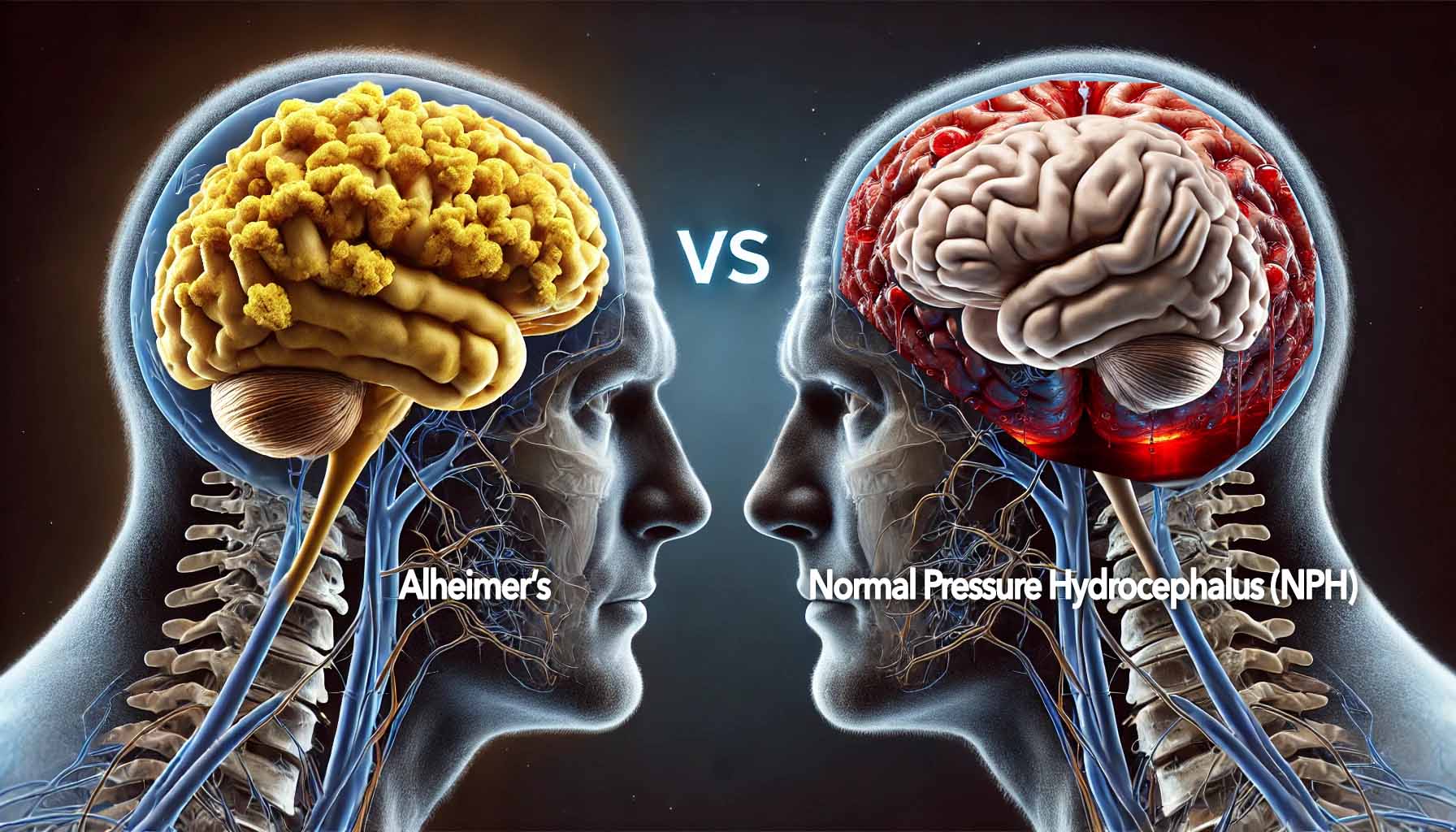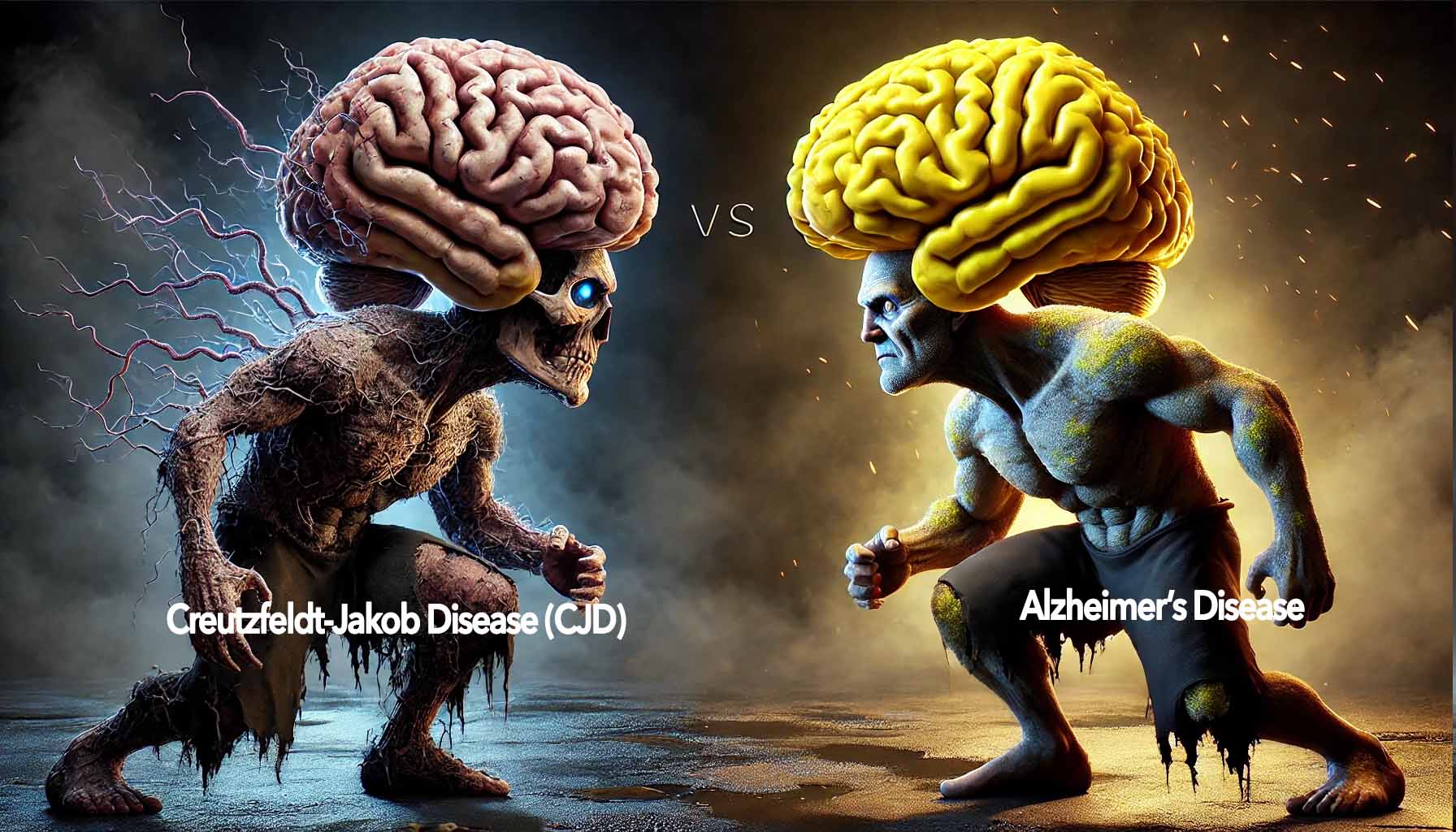What Is Alzheimer’s Disease?
Alzheimer’s disease is the most common form of dementia, accounting for 60-80% of cases. It typically begins with memory loss and progresses to confusion, disorientation, and difficulty completing everyday tasks. Alzheimer’s is caused by the buildup of Beta-Amyloid plaques and Tau tangles in the brain, which disrupt communication between brain cells and lead to their death.
Key Symptoms of Alzheimer’s:
- Memory Loss: Difficulty remembering recent events is often the first and most noticeable symptom.
- Disorientation: Trouble with dates, times, and places becomes common.
- Difficulty Completing Familiar Tasks: Everyday tasks like managing finances or cooking become difficult.
- Language Issues: Difficulty finding the right words and following conversations.
- Mood Changes: Anxiety, depression, and withdrawal from social situations are common.
What Is Frontotemporal Dementia (FTD)?
Frontotemporal Dementia (FTD) is a group of brain disorders that primarily affect the frontal and temporal lobes of the brain—the areas associated with personality, behavior, and language. FTD is less common than Alzheimer’s, accounting for about 10-15% of dementia cases. It typically affects people at a younger age than Alzheimer’s, with symptoms often appearing between the ages of 40 and 65.
Key Symptoms of Frontotemporal Dementia (FTD):
- Personality and Behavior Changes: Often the first noticeable symptom. People with FTD may become socially inappropriate, impulsive, or apathetic.
- Language Problems: Trouble speaking, understanding, or naming objects is common in certain types of FTD.
- Movement Issues: In some forms of FTD, movement problems similar to those seen in Parkinson’s or ALS may occur.
- Memory Loss: While memory issues can occur in later stages, they are less common in the early stages of FTD.
Alzheimer’s vs Frontotemporal Dementia (FTD): Symptom Comparison
| Symptom |
Alzheimer’s Disease |
Frontotemporal Dementia (FTD) |
| Memory Loss |
Early and prominent, particularly short-term memory |
Less common in early stages, but can appear in later stages |
| Personality Changes |
Personality changes in later stages |
Early onset—dramatic personality and behavioral changes |
| Language Issues |
Difficulty finding words and following conversations |
Often severe, especially in language variants of FTD |
| Disorientation |
Confusion about time and place early on |
Rare in early stages |
| Mood Changes |
Depression, anxiety, and withdrawal |
Apathy, social inappropriateness, and impulsive behavior |
| Movement Issues |
Rare until late stages |
Present in some forms, similar to ALS or Parkinson’s |
Causes: Alzheimer’s vs FTD
-
Alzheimer’s Disease:
Alzheimer’s is caused by the accumulation of Beta-Amyloid plaques and Tau tangles in the brain, which disrupt brain cell communication and eventually lead to brain cell death. The exact cause of these buildups is still being researched, but genetics, aging, and lifestyle factors are known to play a role.
-
Frontotemporal Dementia (FTD):
FTD is caused by the degeneration of the frontal and temporal lobes of the brain. In some cases, FTD is linked to specific genetic mutations, such as those in the MAPT, GRN, or C9orf72 genes. However, not all cases of FTD are inherited. Unlike Alzheimer’s, FTD does not involve the buildup of Beta-Amyloid or Tau proteins, but rather different forms of protein aggregates, such as TDP-43 or tau, in the affected brain regions.
Progression: FTD vs Alzheimer’s
-
Alzheimer’s Disease:
Alzheimer’s typically starts with short-term memory loss, progressing to more severe cognitive problems such as disorientation, confusion, and eventually, an inability to recognize loved ones. The progression of Alzheimer’s is generally gradual and gets worse over several years, eventually leading to total dependence on caregivers.
-
Frontotemporal Dementia (FTD):
FTD usually starts with behavioral or language problems, rather than memory loss. Patients may become socially inappropriate, impulsive, or emotionally detached. In language variants, speech and communication become severely impaired. Memory problems often appear in the later stages of the disease. FTD generally progresses faster than Alzheimer’s, with patients declining more rapidly, but this can vary depending on the subtype.
Diagnosis: Frontotemporal Dementia versus Alzheimer’s Disease
Accurately diagnosing Alzheimer’s and FTD requires a combination of cognitive tests, medical history, and brain imaging to identify the underlying cause of the dementia symptoms.
-
Medical History and Physical Exam
Both Alzheimer’s and FTD are diagnosed through a detailed medical history and physical exam. Doctors will look for early signs of cognitive impairment, behavior changes, and any family history of dementia.
-
Cognitive Tests
Cognitive tests like the Mini-Mental State Exam (MMSE) and Montreal Cognitive Assessment (MoCA) are often used to assess cognitive decline in Alzheimer’s patients, primarily focusing on memory, attention, and problem-solving. The Silver House Operational Exam (SHOE) can help distinguish between Alzheimer’s and FTD by assessing memory, language, and behavior.
-
Brain Imaging
- Alzheimer’s: MRI or PET scans may be used to detect Beta-Amyloid plaques and Tau tangles, confirming Alzheimer’s diagnosis.
- FTD: MRI or CT scans are used to look for shrinkage in the frontal and temporal lobes, which is a hallmark of FTD. PET scans may also help differentiate FTD from Alzheimer’s by showing different patterns of brain activity.
-
BAT Testing™
- Alzheimer’s: A key diagnostic tool for Alzheimer’s is BAT Testing™, which measures Beta-Amyloid and Tau levels in the blood as part of the BATWatch™ Protocol. This allows for early detection of Alzheimer’s risk.
- FTD: There is no equivalent blood test for FTD. Diagnosis primarily relies on cognitive tests, brain imaging, and genetic testing if a hereditary form is suspected.
-
Genetic Testing
- Alzheimer’s: Genetic testing for the APOE-e4 gene may help identify individuals at higher risk for Alzheimer’s, especially in cases of early-onset Alzheimer’s.
- FTD: In some cases, FTD is linked to specific genetic mutations. Testing for mutations in the MAPT, GRN, or C9orf72 genes can help confirm the diagnosis of FTD, particularly in familial cases.
Treatment Options: Alzheimer’s vs Frontotemporal Dementia
While there is no cure for either Alzheimer’s or FTD, treatment can help manage symptoms and improve quality of life.
-
Alzheimer’s Treatment:
Alzheimer’s is typically treated with medications like Donepezil and Memantine to slow cognitive decline. Non-medical treatments like CogStim therapy can also help improve cognitive function and slow disease progression.
-
FTD Treatment:
There are currently no medications approved specifically for FTD, but behavioral and language therapies can help manage symptoms. Some medications used for Alzheimer’s, like antidepressants or antipsychotics, may be prescribed to help manage the behavioral symptoms of FTD, but these must be used with caution. CogStim therapy can also be adapted for FTD patients, focusing on language skills and behavior management.
Wrapping Up…
Though Alzheimer’s and FTD are both types of dementia, their symptoms and progression differ significantly. Alzheimer’s is primarily marked by memory loss and cognitive decline, while FTD causes early personality changes, behavioral issues, and language problems. Early diagnosis is crucial for both conditions, as it allows for more effective symptom management and better planning for long-term care.




